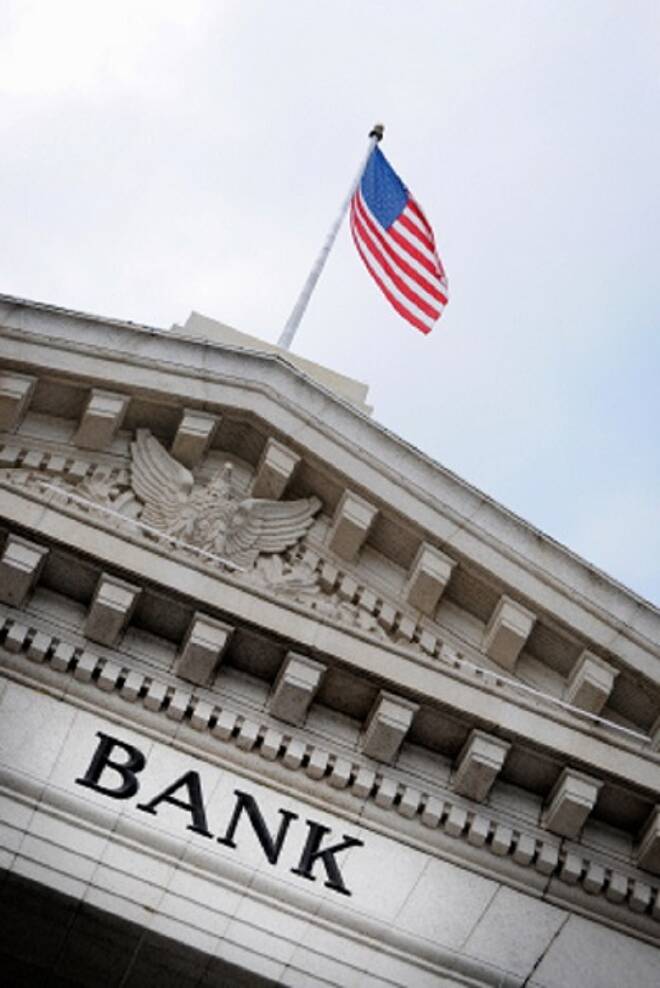Advertisement
Advertisement
Stocks Plunge, Dollar Rises Amid Concerns of Early Fed Rate Hike
By:
U.S. stock index futures plunged over 1 percent on concerns the Federal Reserve might raise interest rates sooner-than-expected following a hawkish speech
U.S. stock index futures plunged over 1 percent on concerns the Federal Reserve might raise interest rates sooner-than-expected following a hawkish speech by a key Fed member. Shortly after the opening, the Dow Jones Industrial Average fell more than 200 points, followed by over 1 percent losses by the S&P 500 and NASDAQ Composite.
The steep break was triggered by Boston Fed President Eric Rosengren when he said, “My personal view, based on data that we have received to date, is that a reasonable case can be made for continuing to pursue a gradual normalization of monetary policy.” Rosengren, historically a dovish member of the FOMC, refrained from discussing when he thought the Fed should move.
Rosengren also said low interest rates are increasing the chance of overheating the U.S. economy. Gradually tightening monetary policy is appropriate to maintaining full employment, he added.
Perhaps softening Rosengren’s hawkish comments was Fed Governor Daniel Tarullo, also a voting member of the FOMC, told CNBC he wanted to see more evidence of inflation before raising rates.
Later in the session, Dallas Fed President Rob Kaplan is scheduled to speak at the Mission Capital conference in Austin. Kaplan is also scheduled to speak in the evening at the Dallas Security Traders Association convention.
Investors also responded to news that U.S. Fed Governor Lael Brainard would give a speech on Monday. Brainard is considered one of the Fed’s more dovish members, so she is more inclined to leave rates lower in order to strengthen employment. The scheduling of her speech suggests that while she may deliver a message that the Fed is close to raising rates, there may be a consensus developing on the FOMC to do so.
U.S. Treasury yields rose in response to Rosengren, making the U.S. Dollar a more attractive investment against a basket of currencies. The AUD/USD was the biggest loser on Friday, falling over 1 percent as the market traded down to .7554. This Forex pair is also responding to comments from outgoing Reserve President Glenn Stevens, who expressed concern with the Aussie value.
The Euro lost about 0.50% while the British Pound fell the same against the U.S. Dollar. The USD/CAD was a big gainer, surging to 1.3042 before pulling back to 1.3036, up 0.0118 or +0.92%.
The stronger U.S. Dollar helped push gold lower for a third day as investors continued to take profits after the recent run-up. However, the market was still in a position to post its second consecutive weekly gain.
Crude oil futures gave up some of its spectacular gains from Thursday, but were still in a position to close higher for the week. Traders also said the market was being underpinned by the news that Russia and Saudi Arabia had agreed to work together to help rebalance the markets.
Also providing some support for prices was the International Energy Agency that said it expects oil demand to finally exceed supply in the third quarter of 2016, meaning record global crude stockpiles should start falling.
About the Author
James Hyerczykauthor
James Hyerczyk is a U.S. based seasoned technical analyst and educator with over 40 years of experience in market analysis and trading, specializing in chart patterns and price movement. He is the author of two books on technical analysis and has a background in both futures and stock markets.
Advertisement
